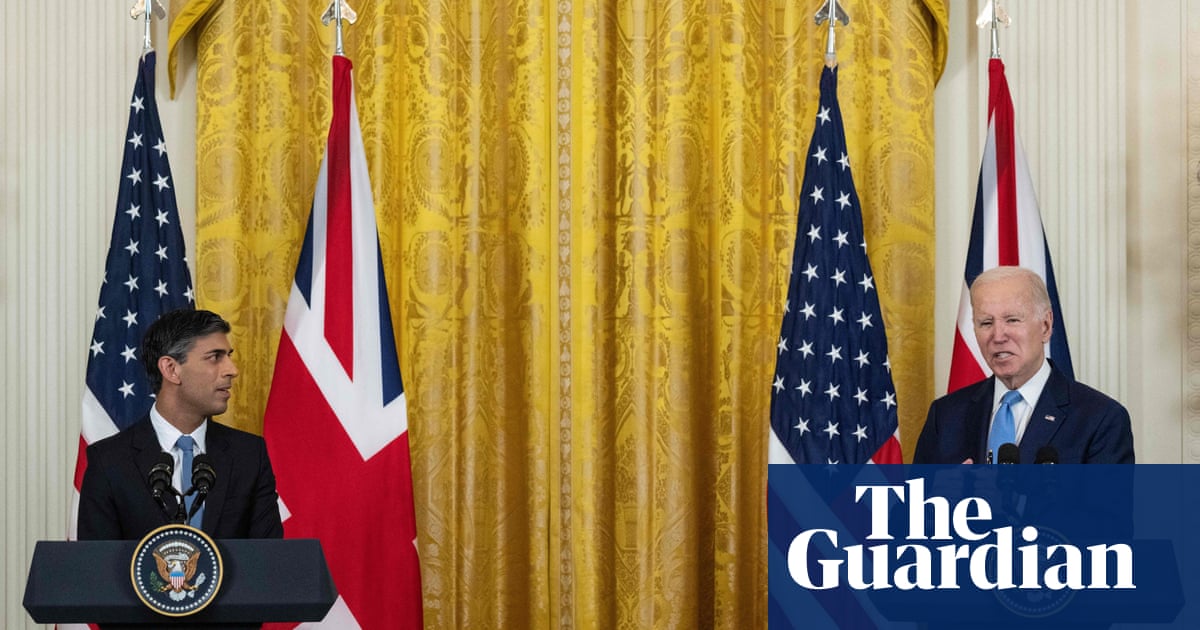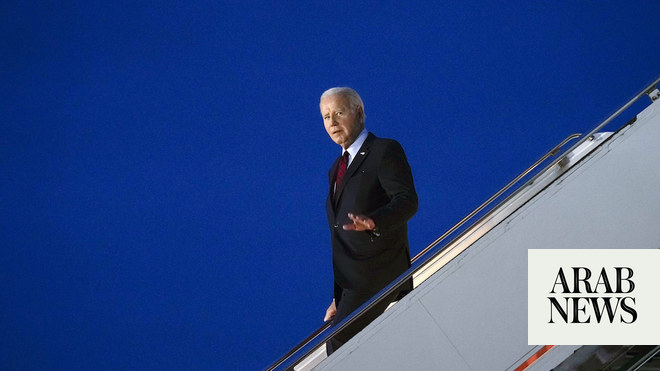
Western leaders this week marked the 75th anniversary of NATO. Yet most of the attention during the organization’s annual summit in Washington was focused on US President Joe Biden.
Several US allies around the world were alarmed by his poor performance during the recent presidential debate, which cemented a growing belief that should he remain the Democrat candidate, he will lose the election in November to his Republican rival, the NATO-skeptic Donald Trump; so much so that some in the military alliance are already predicting transatlantic turmoil at the next NATO summit, due to take place in The Hague in June next year.
Former Trump administration officials, including National Security Adviser John Bolton, have confirmed that the former president came close to announcing a US withdrawal from the alliance while he was in power between 2017 and 2021. Despite the strength of other NATO members, there is no question that a US exit would be a body blow to its credibility.
Behind the scenes, there is much scenario-planning going on in Western capitals regarding the feasibility of a NATO without US participation. It is possible that the alliance could try to remain functional for a few years in the hope that a successor to a second Trump presidency might return the US to the fold.
However, there are splits within the alliance on these issues, as illustrated by Hungarian Prime Minister Viktor Orban, whose nation currently holds the rotating, six-month presidency of the EU. Orban made a controversial visit to Moscow this week to meet President Vladimir Putin. Last month, he leveraged his power to veto the appointment of Mark Rutte as secretary-general of NATO to secure an opt-out for Hungary from the alliance’s activities in support of Ukraine. He has also voiced opposition to NATO’s growing focus on China.
One of the few subjects on which Trump, while president, agreed with NATO was its newfound focus on China. He will therefore potentially be pleased that a key item on the agenda during the summit this week was the threat posed by Beijing, including its sale of tools and technology to Russia.
For a third year in a row, top officials from key Western allies in the Asia-Pacific — Australia, New Zealand, Japan and South Korea — attended the NATO summit. The alliance has low-level partnerships with all four and wants to build on this.
However, it was Ukraine and NATO’s broader future that were the main items on the agenda and here there were some positive announcements, despite the uncertainty about a possible Trump presidential victory.
Since Russia’s invasion of Ukraine in February 2022, northern European membership of NATO has grown, and the alliance welcomed Sweden to the first summit it has attended as a formal member.
For all its weaknesses, NATO remains one of the most successful military organizations in history.
Andrew Hammond
The leaders of the 32 member states also highlighted progress on defense budgets. This year, 23 of them are on course to meet the NATO target of spending 2 percent of gross domestic product on defense. Key exceptions remain Canada, Italy, and Spain.
On the issue of Ukraine, a major, one-year, €40 billion ($43.6 billion) pledge of support was announced. While this is less ambitious than the initial proposal for a multi-year, €92 billion package, it nonetheless provides some future clarity for Kyiv.
The alliance also agreed to take over much of the coordination of arms deliveries from the Ukraine Defense Contact Group, a coalition of about 50 nations. This gives NATO a more direct role in the war against Russia while still falling well short of committing its own forces.
So the good news for incoming NATO chief Rutte is that the context for the debate about the organization’s future has been transformed in recent years. As recently as 2019, there was widespread concern about its purpose, with French President Emmanuel Macron suggesting it was “brain dead” as a result of the rapidly changing geopolitical landscape, in particular the diminished commitment of the US under Trump. Fast forward to today and Macron has said Russia’s invasion of Ukraine woke up NATO with the “worst of electroshocks.”
It has been an unexpected turnaround of fortunes, in the most serious of circumstances, and one that could further be fueled by Western concerns about China.
The war in Ukraine has underlined the continuing relevance of NATO, the members of which have a collective population of about 1 billion. For all its remaining weaknesses, the alliance remains one of the most successful military organizations in history. It has helped underpin the longest period of sustained peace in the modern history of the West, while its combined membership accounts for about half of global GDP.
In this context, Rutte and many other Western leaders have asserted that the best way to prepare for a possible second Trump presidency is to transform the alliance and increase defense spending by its members.
Here, a combination not only of Russian military assertiveness but also the legacy of Trump’s uncertain commitment to Europe’s security is turning the picture around. In the longer term, higher spending on defense might become locked in by concerns about wider global security shifts, including threats posed by China.
• Andrew Hammond is an associate at LSE IDEAS at the London School of Economics.












